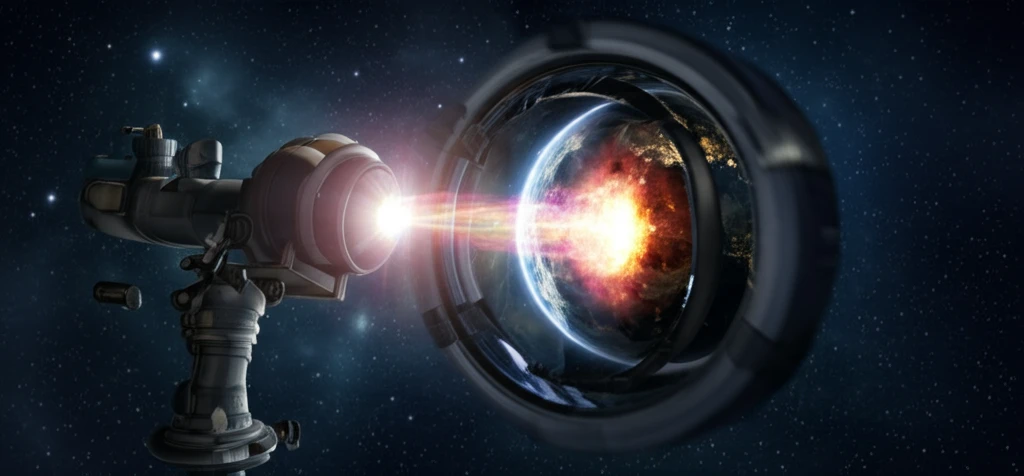
Decoding Solar Flares: What the First MUV Detection Means for Our Understanding of Space Weather
"New research unveils the detection of solar flare emission in the mid-ultraviolet Balmer continuum, offering critical insights into flare energy and space weather forecasting."
Solar flares, among the most powerful events in our solar system, release vast amounts of energy. Understanding how this energy is distributed across the solar spectrum has been a long-standing challenge. While X-ray and extreme-ultraviolet (EUV) emissions are routinely measured, they only capture a fraction of the total energy released during a flare.
Most of the flare's radiation is emitted at longer wavelengths, including the far-ultraviolet (FUV), mid-ultraviolet (MUV), and near-ultraviolet (NUV) ranges. Despite their importance, observations in these spectral ranges have been limited. The region between 1000 and 3000 Å is particularly significant but poorly understood, representing a critical gap in our knowledge of solar flare energy distribution.
Recent studies have begun to shed light on this area, with measurements taken by rocket-borne and space-borne experiments. These investigations aim to fill the gaps in our understanding of how flares emit energy across different wavelengths. The detection of solar flare emission in the MUV Balmer continuum, as measured by the Large-Yield RAdiometer (LYRA) aboard the PRoject for OnBoard Autonomy 2 (PROBA2) mission, marks a significant step forward.
What Does the Detection of MUV Balmer Continuum Tell Us About Solar Flares?

The Large-Yield RAdiometer (LYRA), onboard the PROBA2 mission, made a groundbreaking observation during a solar flare (SOL20170906). For the first time, scientists detected flare emission in the mid-ultraviolet (MUV) wavelengths around 2000 Å. This event was also observed in the first channel of LYRA, which is centered on the HI Lya line at 1216 Å. The data revealed a non-thermal profile in both channels, indicating significant energy release.
- Balmer Continuum Emission: The detection confirms the presence of hydrogen recombination continua originating in the chromosphere.
- Energy Distribution: Understanding the emission helps map how energy is distributed during solar flares.
- Instrumentation: The Large-Yield RAdiometer (LYRA) played a crucial role in this discovery.
- Chromospheric Heating: Indicates significant heating of the chromosphere during flares.
The Implications for Space Weather and Future Research
The detection of MUV Balmer continuum emission provides a new avenue for understanding solar flares and their effects on space weather. By accurately measuring the energy distribution across different wavelengths, scientists can improve models and predictions of space weather events. Further research, including spatially and spectrally resolved observations, will be crucial to fully constrain the physics of broadband emission in flares and to develop effective forecasting methods.
